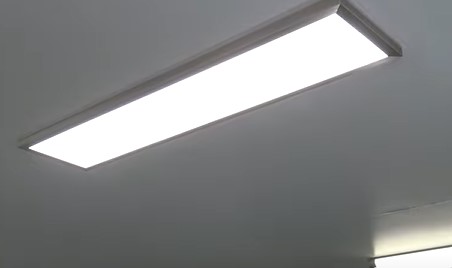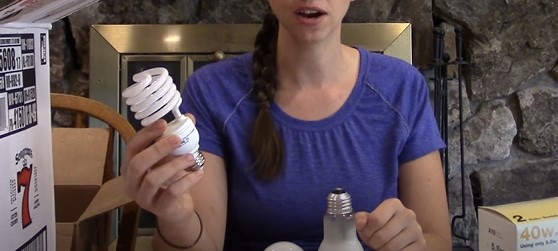Have you ever wondered how much money you could be wasting by leaving the lights on all day? Leaving a single light bulb on for 24 hours may not seem like a big deal, but over time, the costs can really add up.
We will explore just how much it costs to leave a light on all day and provide tips on how to save money on your electricity bill.
How Much Does It Cost to Leave a Light On All Day?
The cost of leaving a light on all day varies depending on the type of bulb you use. Not all bulbs are created equal in terms of energy efficiency and output. Here’s a breakdown of the estimated cost for bulbs that have the same brightness as a 60-watt incandescent bulb: A 60-watt incandescent bulb uses 60kWh of electricity in 1,000 hours, which costs around $6.00.
A 43-watt halogen bulb is slightly less expensive than incandescent lighting but still costly, with 1,000 hours of usage costing nearly $5.00. A 15-watt CFL bulb is a more affordable option, with 1,000 hours of usage costing around $1.70. Finally, a 12-watt LED bulb is the cheapest option, costing just over $1.00 to operate for 1,000 hours, which is only a small fraction of the bulb’s lifespan.

What is the Energy Consumption of a Light Bulb?
The energy consumption of individual light bulbs is relatively small, usually around 40 watts. However, the real cost comes from the number of bulbs you have in your home. It’s not uncommon to have 20 to 30 bulbs throughout your house. Each bulb’s wattage is typically indicated on the box, making it easy to determine how much energy it uses.
For instance, a 60-watt incandescent bulb will consume 60 watts of energy if left on for an hour. It’s worth noting, though, that not all bulbs produce the same amount of light despite having the same wattage. So, the actual amount of light you get from a 60-watt bulb may vary depending on the bulb’s type and quality.
Does Leaving the Lights On Cost a Lot of Money?
Although individual light bulbs consume small amounts of energy, the overall cost can quickly become significant. The average US household contains about 45 light bulbs, which means leaving them on for extended periods, like during vacations, can lead to steep electricity bills. However, you can decrease your energy consumption by using LED (light-emitting diode) lights instead.
These lights are around 90% more energy-efficient than incandescent lights, meaning they use significantly less energy while providing the same amount of light. By making this switch, you can save money on your energy bills over time.

Is It Fine to Keep a Light On All Night?
While leaving a single light bulb on overnight may not seem like a big deal, regularly leaving lights on can add up and increase your electricity bill. An average US household has around 45 bulbs, and leaving them on overnight can cost about $2.5 (assuming they are incandescent bulbs).
This cost comes from the energy consumption of the bulbs, which is calculated by multiplying the number of bulbs by their wattage, the hours they are on, and the cost per kilowatt-hour. If you do this regularly, the costs can quickly accumulate and lead to a higher electricity bill over time.
Therefore, it’s best to avoid getting into the habit of leaving lights on when you don’t need them to save energy and reduce costs.
How to Save Money on Light Bulbs?
Lighting is an essential part of our daily lives, but it can also be a significant contributor to our energy bills. Here are some tips on how to save money on light bulbs:
Switch to LED Bulbs
LED (Light Emitting Diode) bulbs are energy-efficient and can last up to 25 times longer than traditional incandescent bulbs. While LED bulbs may initially cost more than other types of bulbs, they can save you money in the long run due to their energy efficiency and longevity.

Choose the Right Brightness
A common misconception is that higher wattage bulbs produce brighter light. However, a bulb’s brightness is measured in lumens, not watts. So, when buying bulbs, look for the lumens rating to determine how much light the bulb produces. By choosing the appropriate brightness, you can avoid wasting energy and money.
Turn Off Lights When Not in Use
Turning off lights when not in use is a simple but effective way to save money on energy bills. You can also install motion sensor switches or timers to automatically turn off lights when they are not needed.
Consider Natural Lighting
Natural light is free, so take advantage of it whenever possible. Position your furniture and use curtains or blinds to allow natural light to enter your home. This way, you can reduce the need for artificial lighting during the day and save money on your electricity bill.
Use Energy-Saving Fixtures
Energy-saving light fixtures like reflector bulbs, track lighting, and dimmer switches can help you reduce energy usage and save money. For instance, reflector bulbs focus the light in one direction, reducing the need for multiple bulbs.
Buy in Bulk
If you need to replace several bulbs at once, buying them in bulk can be an excellent cost-saving measure. Many stores offer discounts on bulk purchases, which can help you save money in the long run.

Conclusion
Leaving lights on all day may seem like a small issue, but it can add up to a significant cost over time. By being mindful of the types of bulbs you use and turning off unnecessary lights, you can save money on your energy bills.
So, the next time you leave a room, make sure to switch off the lights to save some extra dollars in your pocket.

